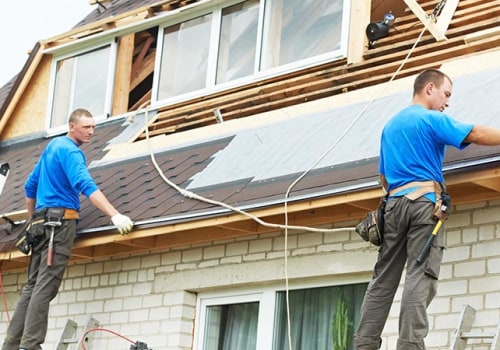A fixed loan is short-term financing that real estate investors use to buy a property that they fix and resell for a profit. This is known as a “change of house”. “Fix and Flip” loans may include property funds and renovation expenses. Fix-and-flip is the strategy of buying a property, renovating it, and then selling it at a profit.
Investors often buy a property at a discount because of its status. It may have deteriorated due to abandonment or because the current owner was unable to pay for maintenance. Sometimes the property just needs some aesthetic update, but more often it requires major renovations. In some cases, it may not be legal to occupy the home until investors can prove that they made certain repairs.
Renovating and changing houses is a time-consuming undertaking. It can take months to find and buy the right property. Once you own the home, you'll need to invest time to fix it. If you have a day job, time spent on demolition and construction can translate into wasted nights and weekends.
If you pay someone else to do the work, you'll continue to spend more time than you expect overseeing the activity, and the costs of paying others will reduce your earnings. In a repair and change project, property is often purchased at auction, through foreclosure or bank short sale. Afterwards, a buyer can try to sell the property “as is” or they can choose to add value by upgrading the property before selling it by placing ads such as "Find An Arizona Airbnb For Sale". This is where fix-and-flip loans come into play.
When a buyer decides to improve and resell the property for profit, fixed loans are typically used to cover the initial costs of renovating the property. A common technique is to buy dilapidated homes in a good neighborhood and fix them with fixed, reversible loans. This technique works reasonably well if the purchase price of the home does not exceed 70% of the post-repair value, minus the cost of doing the repairs. You want to have a wide margin of error in your trade to avoid losing money.
A Flip Fix & loan is a short-term, high-interest loan that covers the cost of buying the property and making repairs. Real estate investors use fixed and reversible loans, also known as bridging loans, rehabilitation loans, or residential transition loans, to buy a property, improve it, and sell it for profit. The flexibility built into a fixed money loan is good news for borrowers, but it definitely doesn't mean lenders are handing out cash to anyone who decides they want to try to change homes. Fix and flippers who also own rental properties can take money out of their existing rentals to finance their next investment.
It's important to understand “fix and flip” loans for investors who are knowledgeable and experienced in the world of real estate investing. As mentioned above, a 26% fixed loan typically includes both a purchase and a renovation or construction component. Instead, funding may come from private investors with “hard money” who charge high fees and high interest rates due to the risk of fixed and reversible funding. Despite the difference, many of the terms and processes are the same for fixed and investment loans and construction loans.
Some investors use more conventional loans and lines of credit to finance their projects, but most fixed and reversible loans are hard money loans from individuals or private investors. In a nutshell, the drawing process is an easier way to do business that allows you to get the money you need to buy a home and renovate it, also known as fixing and flipping. This is because hard money fixed loans, unlike traditional banking institutions' financing options, were designed specifically for the fast-paced world of real estate investment. Outside of the renovation and construction costs themselves, changing a property may contain hidden costs.
If you're handy with a hammer, enjoy laying carpets, and can hang drywall, roof a house, and install a kitchen sink, you have the skills to flip a house. The main difference between a renovation loan and a fixed loan is that a renovation loan is only structured to finance renovations, not the purchase of a property. . .



